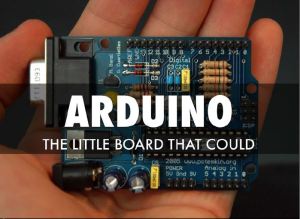Compared to the evolution of the Maker Movement in Western countries, China has already formed a much larger and better down-top ecosystem, manifesting the ultimate goal of the Maker Movement – democratizing innovation. We call it the New Shanzhai. The question is, what will happen when these two worlds meet together?
Read this article in Chinese | Français
Let’s talk about Maker
David Li, co-founder of Xinchejian, Hacked Matter.
Eric von Hippel depicted the ideal state for future innovation in his book Democratizing Innovation (2007). He wrote that it should come without the barrier of intellectual property rights (IPR). All users of a certain product should be endowed with the right to alter it for better self-use. The Maker Movement is the real practice of this theory in the West.
The idea of Maker originated from Germany, with C-base, the earliest Makerspace, based in Berlin. From 2004 to 2005, Maker groups sporadically rose up in other European countries including France, with Makers at early stages loving to delve into serious talks about IPR and patent ethics. It wasn’t until entrance to the U.S. did the discussions become much more casual and universal. Makerspace formed an online community by providing space and means for hardware enthusiasts with freedom and imagination for creating independent or cooperative objects. Makers in the U.S. organized their own festival, Maker Faire, to showcase their marvelous designs.

Chris Anderson, former Editor-in-chief of Wired Magazine joined and later reversed this trend. In 2011, Anderson announced his own publication, Makers: The New Industrial Revolution, amid great attention from the public. Maker Movement went beyond a form of self-entertainment for hardware enthusiasts and gained enough momentum to attract funding to power through manufacturing and sales. In fact, open source, crowdfunding and 3D printing constitute three interactive factors that fueled the rapid rise of the Maker Movement.
Open Source – Open source software grew from a niche product to become popular among the public. In contrast, the development of open source hardware has just gotten off the ground. To understand the concept of open source (PTR interview, “Open-source: untangling a web of assumptions”), one should first recognize that all people can exercise three types of rights: comprehension, revision and dissemination. This simple idea triggered unimaginable effects that enticed tens of thousands of people to innovate. Arduino, looking like a mini circuit board, actually works as a micro computing device that is widely used as a CPU in 3D printers, robots and drones, to name but a few. Everyone has the rights to obtain, modify and distribute it to others thanks to its open source nature. The advent of such a device has significantly contributed to the worldwide craving for 3D printers.

Credit goes to Dawei Li.
3D printing – It is no longer considered the latest technology. The expiration of a core patent made it possible to put open source 3D printers into commercial use. Makerbot, created by the American Maker Organization NYC Resistor, was among the first bringing the idea and technology of open source 3D printing to the public, making 3D printer a desk-top machine that everyone can easily get and learn to use. With the retail price at $2,025, 99% of the first batch of products failed to function normally. Nonetheless, 1,000 units were sold. The threshold of having one’s own business was remarkably lowered thanks to the cheap cost of prototype manufacturing due to using 3D printers. (Related article on PTR: “Beyond the hype: the industrial challenges for 3D printing”)
Crowdfunding – This mode has revamped the entire innovation process. It has erased steps that entrepreneurs had to go through to start a business in the past, like looking for investment, manufacturing products, promotion and sales, and finally expecting returns. Nowadays, products are already placed on the market even before they are manufactured. A good design on Kickstarter, an American crowdfunding website, can earn a deposit of sales from hundreds of thousands of dollars to even millions of dollars in just a few weeks. This sales model has proven to be efficient and applicable to markets around the globe. Suppose you are looking to make a flying bike; it is very likely you can gain support from Kickstarter even if you have yet to develop the technology behind the product. (Related article on PTR: “The Social Side of Strategy”)
Story on this side
Hacked Matter (Our think tank studying Chinese copycat industry and culture) noticed something interesting when studying and trying to understand the impact of Maker and crowdfunding on China.
After a round of research in cities including Shenzhen and Shanghai, we discovered what compared them to the evolution of the Maker Movement in Western countries. China has already formed a much larger and better down-top ecosystem, manifesting the ultimate goal of the Maker Movement – democratizing innovation. We call it the New Shanzhai.
The Chinese word for Shanzhai can be traced back to year 1999-2000, representing the act of copying and duplicating brand products. In recent years, Shanzhai has seen some changes in its meaning. The early concept of Shanzhai cell phones refers to mimicking Nokia, Samsung and Ericsson phones, whereas rising production volume and simple mechanical duplication later took a crimp on the profit margin. Presumably, some products later were introduced to the market with some “magic” functions and an incredibly low price. Copying international brands no longer looked so lucrative and was soon replaced by mutual copy. This trend helped build an open ecosystem and imminent supply chain, known as the New Shanzhai, avoiding problems related to IPR.
Take a visit to any mobile phone market in Shenzhen and you will find many vendors sitting behind small booths doing business. However, there’s no way you can just buy one or two sets of phones from these vendors. They are only interested in wholesale, not retail. They sell in bulk – phones of any type, look or function. Phone vendors in other countries will stress the identical functions their phone has to an iPhone6. As for their peers in Shenzhen, their selling point is things you can’t do with an iPhone6.
There is an obvious difference in target market between these phones and brand name phones. Phones designed with a special purpose for a distinctive group of people or a certain environment suit better for the Niche Market, which developing countries and rural areas belong to. Each year 400 million customized phones are sold, accounting for a quarter of the total global shipment. These products are designed to serve cultural customs and living styles. For instance, phones for Muslims can remind users of the time and places to pray; those for construction site workers carry seven speakers. Markets with special needs have been overlooked despite huge potential.
What’s interesting is that this new ecosystem is reshaping the whole phone industry. People would have found it absurd if someone predicted the downfall of Nokia or Motorola ten years ago. However the fact is, Nokia phones no longer enjoy the market position they used to. And who actually remembers Ericsson? Nokia released a phone costing $800 a decade ago. Meanwhile, what we believed were “Shangzhai” phones made in China actually triumphed where Nokia failed by offering a phone for $200. Phone makers continued to roll out new models and improvements to make ends meet, rather than to live up to noble ideas. It took little time for people to discover that similar products could be found on Taobao three years before Google released Chromecast in 2013.
Today, with an investment of $300,000, you can develop smart phones under your own brand – simply follow these steps: Bring your design to Shenzhen; find a factory to produce it; sign an order for 10,000 sets of phones at a price of $30 per set. Wiko, a smartphone brand born in France, only took two years to attain a market share of 18% in the French smartphone market. Now Wiko has grown from a co-production by a French sales team and a Shenzhen phone-making factory to one of the most popular smartphone brands among young French people, ranking it right after Apple and Samsung.
For companies like Wiko and Xiaomi, the key to success lies in localization. The conventional telecommunication industry thinks little of setting up a specific brand for a small amount of needs. However in the past few years, brands featured with more local consumer experience and functions are gaining more popularity. Product customization (Related article on PTR: “The advent of ultra-customers”) is a common service seen almost everywhere.
Then how does this efficient system run?
Professor John Hagel and Professor John Seely Brown from Harvard Business School used to conduct a survey of the Chongqing motorcycle manufacturing industry. They shared the result at the Davos Economic Forum in 2006. Chongqing’s motor industry developed from scratch to become a major supplier for Honda and Yamaha in just one short decade. Some people believe the local government is a major player behind this, but this only accounts for part of the story. Both professors concluded that, thanks to a highly free and open information flow system, firms find themselves in the process of sharing experiences all the time. For each design, everyone has the right to propose suggestions for improvement, which goes all the way across the supply chain. What makes it better is that this type of exchange does not take place in formal meetings, but rather, happens during informal networking or catch-ups.
The same type of informal network dominates the cell phone supply chain in Shenzhen as well. People no longer locate themselves in the same office anymore. They reshuffle on the basis of projects. A promising project will soon attract a group of talents or a few competent companies, with each having different assignments. Some will be in charge of providing printed circuit boards (PCB); some take care of the shells, with the rest of the parts covered by another team. Since the threshold for entering is low, it is even acceptable for companies to try crazy projects. Free information flow brought unrelated companies together and enabled grassroots innovation.
When international Makers meet Chinese copycat
Pepple smartwatch is one of the most successful Kickstarter projects. The entire industry became thrilled when the project’s financing reached $10 million, and many believed a rival would be ready to challenge Apple very soon. Such a claim is not totally groundless. The designer and engineers behind this watch used to be veteran employees of Apple. What was not expected though was that delivery was 18 months behind the schedule with poor quality to show for it.
The past three decades witnessed the formation of a dual-pyramid mode of branding and outsourcing. In consumer electronics, brands such as Apple and Samsung dominate the top, with Foxconn and Flextronics ranking high among OEMs. Users continue to enjoy priority position in the market. These three formed a triangle that ensures stability – the users of the company depend on its suppliers.
With their knowledge about manufacturing coming merely from the biography of Steve Jobs, quite a few Makers know only little about this industry and most of them think like they are living in the 1970s. They have no idea how to form an ecosystem and supply chain for modern manufacturing. Every time Apple’s designers planned a trip to Shenzhen, staffs from Foxconn were waiting for their arrival. Genius designers thus mistakenly thought dealing with manufacturers would be as easy as counting to three. Not until starting their own business do they realize that they have no choice but resorting to factories lying at the bottom of the pyramid. Pepple Watch is a perfect example.
However, open source hardware is gaining increasing attention from manufacturing giants. Major campaigners for the Maker Movement, Maker Faire and the founder of Make Magazine Dale Dougherty met Wenxin Tong, President of Foxconn, during the Maker Faire in Shenzhen this April. President Tong decided to set up an R&D center in Beijing for pilot projects, welcoming promising Maker projects to use services from Foxconn. Also, Intel, WPI and Flextronics (Related article on PTR: New Round of Hardware Innovation and Transformation of OEM Giants) have joined the league to move into open source hardware.
New Shanzhai depicted enormous energy and vitality in grassroots innovation with Chinese characteristics. Shenzhen is likely to become a Silicon Valley for smart hardware. Next generation entrepreneurs should work on solving the puzzles for how to make best use of existing experience and resources in Chinese manufacturing to upgrade the whole chain in a comprehensive manner.
 The author of the book Mass Flourishing: How Grassroots Innovation Created Jobs, Challenge, and Change, Nobel Prize for Economics laureate Edmund Phelps from Columbia University believes a competitive advantage lies not only in the ability to innovate, but also relates to how wide and deep the majority of the population can utilize latest technologies. In the past, institutions or countries usually invested heavily in R&D for more competitive advantages. But after a close look at industrialized regions, Professor Phelps concluded that the more people you have that understand and use novelties, the faster the economy can grow and better society can innovate. Maker Movement and New Shanzhai are guiding us in the right direction.
The author of the book Mass Flourishing: How Grassroots Innovation Created Jobs, Challenge, and Change, Nobel Prize for Economics laureate Edmund Phelps from Columbia University believes a competitive advantage lies not only in the ability to innovate, but also relates to how wide and deep the majority of the population can utilize latest technologies. In the past, institutions or countries usually invested heavily in R&D for more competitive advantages. But after a close look at industrialized regions, Professor Phelps concluded that the more people you have that understand and use novelties, the faster the economy can grow and better society can innovate. Maker Movement and New Shanzhai are guiding us in the right direction.

copycat | crowdfunding | hardware innovation | intellectual property | maker movement | manufacturing | shanzhai


